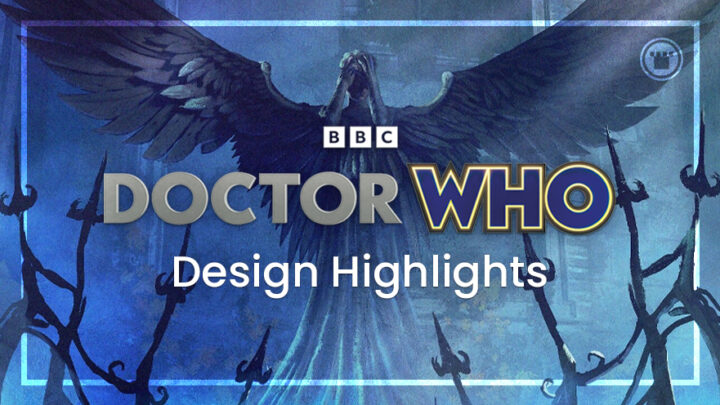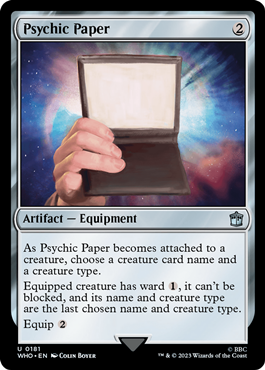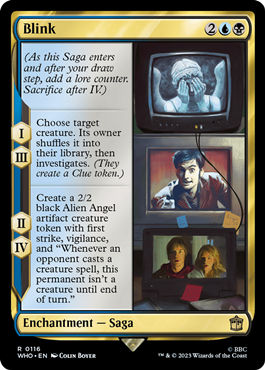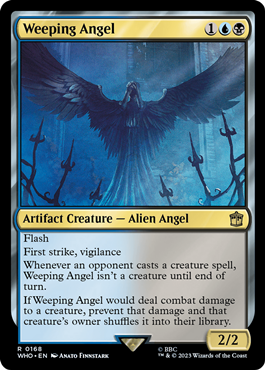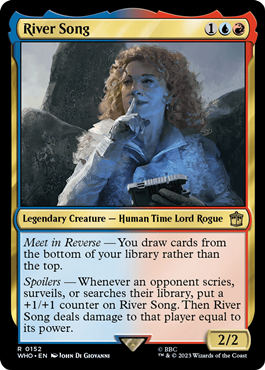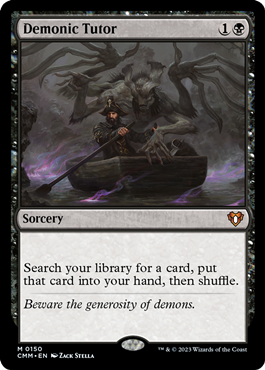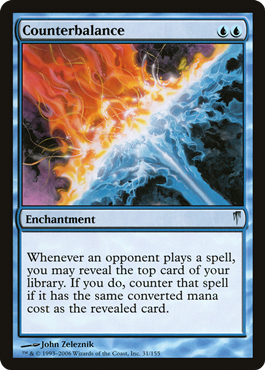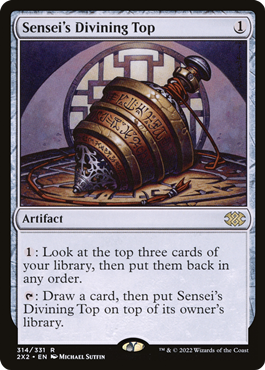Doctor Who holds a very special place in my heart. I love the show and have watched it since I was about 14 — so I couldn’t wait to get my hands on this adventure into Universes Beyond. And since this is such a special occasion, I’m going to deviate from my usual spike-content to enjoy the exciting, flavorful design of the Doctor Who Magic set.
My goal is to help the less enfranchised Doctor Who fan who primarily plays Magic really appreciate these cards and highlight how their design. The cards below include some of my favorites in the set for the way they distill the essence of Doctor Who into a little cardboard square — because there’s a lot more happening on the inside than you might realize.
Psychic Paper
Psychic Paper 100% nails its goals: the object’s straightforward nature and simplicity. If you know Doctor Who, you read this card and can’t help but realize this was the the perfect direction to take.
If you haven’t seen Doctor Who, psychic paper basically camouflages itself to say whatever you need to get into a place. For example, let’s say you needed special clearance to get into the Pentagon. If you showed a guard the psychic paper, it would look like that clearance. And if you got pulled over by the police on the way home, it would look like a driver’s license to them.
So what does this card do? Well, exactly what we described above! It transforms a creature into another, perfectly masking them from suspicion.
Psychic Paper also makes the creature harder to “stop” through giving it both ward 1 and unblockable. Even that directly relates to the psychic paper clearing the way for the Doctor.
That’s why I started with this card: it demonstrates exactly what the Universes Beyond products are trying to accomplish. Psychic paper is strongly evocative and conveys the story of Doctor Who in Magic card form.
The Master, Multiplied
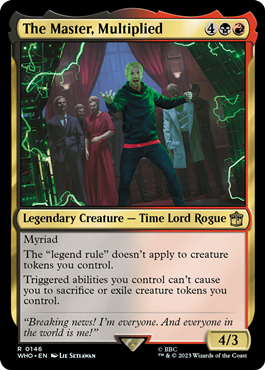
The Master is one of the most iconic villains in all of Who, and this rendition is widely held in the highest regard. What you need to know upfront is The Master is an “evil” time lord, so think of him as the inverse of the Doctor.
Anyway, during the story where this iteration of The Master is featured, he has projected his DNA into everyone on Earth, which will cause them to turn into clones of him when he sends out the right frequency. As a result, the entire planet will be occupied by only The Master!
With that in mind, you can see how this card perfectly encapsulates everything turning into the master and how it gets out of hand incredibly quickly. While I feel like this design might have been somewhat easy to land on, I don’t think that should count against The Master.
Regardless, this card does offer some really cool build around potential for triggered abilities that cause tokens to get sacrificed. I don’t know a ton of commander cards specifically, but this ability makes The Master a whole new type of commander — which is only fitting given the character’s ego.
That by itself has me excited to explore what this deck might look like. And like Psychic Paper, I think this card just nails exactly what you think this version of The Master would do in an incredibly cool way!
Blink
Speaking of episode driven cards, this stand alone episode is one of the most iconic of the modern franchise. So, if you’re interested in trying out the series, this is a great episode to get the feel of the show.
How about the card though? Well, for that we will need a spoilers tag for the episode itself.
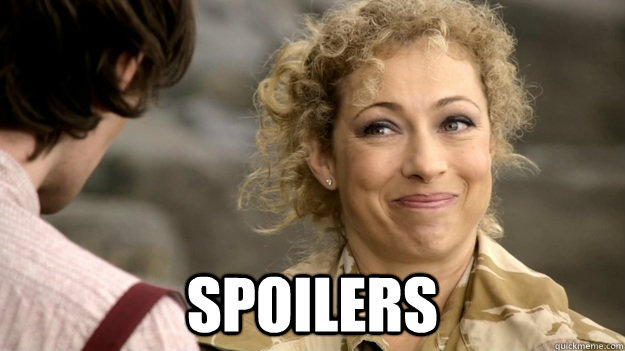
While Psychic Paper nails the object’s simplicity, Blink’s design requires a much more ambiguous approach for designing the card.
For those that haven’t seen Blink, here’s a quick summary of the story. A woman starts encountering these weird, out of order messages at the end of DVDs. She then starts seeing these weird angel statues everywhere.
She comes to realize the DVD messages are connected if watched in the right way, and the message warns her about the threat posed by the angels. She learns the statues can’t move if anyone is looking at them, but they are free to move around if not being perceived. Finally, while the Weeping Angels won’t kill you, they will transport you back in time and feast on the life you lived out in the past.
Now that we understand the background, let’s turn to the card. For starters, the thing most people don’t notice is the saga orders are all out of whack, while also going back and forth. This helps communicate both the time loop the victims experience and how the DVD’s are also out of order.
This is a little confusing on first read, but I think Magic is a better game for including rare exceptions to a card type’s function like this. While I wouldn’t want a ton of saga’s designed this way, Blink makes a great case for this approach.
Moving on, the shuffling cards back into the deck effect is a perfect way to relate demonstrate the Weeping Angels sending people back in time, which I think is great! I’m not a huge fan of all the suspend cards in these Doctor Who decks, and I could also easily see that being the solution for this design, but it just doesn’t feel right despite maybe being the most obvious choice. I’m glad the design team landed on this approach.
The actual Weeping Angel token is brilliant. They are also always on guard, as angels can’t move if perceived by other life forms — so they hide their eyes to avoid looking at one another while hunting. As a result, they are very vigilant. These creatures also always hit first since they move while you’re not looking.
Those parts of the card are perfect! Then having them turn into just artifacts if an opponent casts a creature is the perfect flavor way to convey the Weeping Angel’s lore. Also, I know a lot of people struggle with the fact that angels have wings but no flying. I would simply say the showrunners made it clear the angels can’t fly, so Wizards’ collective hands are tied at the moment.
At the end of the day, Blink somehow masterfully conveys all major story beats while also being a functional card that is potentially playable — particularly in high powered cubes. There are also so many different ways Wizards of the Coast could have gone about making the Weeping Angels and this saga, however, I think the designers nailed it.
River Song
River is a huge fan favorite Doctor Who character. I don’t want to spoil her background too much since she is someone whose story is played out over multiple incarnations of the Doctor, but I’ll explain just enough so anyone can appreciate the genius behind her design.
The big part to focus on, and what makes this card so cool, is views see River’s story in reverse relative to our perspective. When you meet her, she is already married to the Doctor and has all this knowledge of him and where he will be going — but he doesn’t know her since it’s the first time they’ve met from his perspective.
Time travel is weird sometimes. River also likes to remind the Doctor that they can’t tell each other things that maybe could save their lives, as that would throw off the timeline. That’s why her favorite catchphrase is simply to say “spoiler.” And somehow, all of this is masterfully portrayed on the card.
First, how do you convey telling a story in reverse? Well, you draw cards from the bottom of the library instead of the top! It’s an incredibly clever and elegant solution to the problem of designing this card faithfully.
You could do some very convoluted, alternative approaches, like maybe having her interact with time counters and speed stuff up — but I think that boxes her in too much as a support piece for the Doctor. She’s much more than just his wife, so I like that she is her own unique card that plays with her own characteristics.
Next, her “Spoilers” ability is just perfect for translating the idea of her character standing against saying what’s coming next into a gameplay mechanic. And on a personal note, it’s also a nice tool for people (like me) who think tutors detract from the Commander format’s singleton nature. So I love River Song punishing that class of cards, even if it’s just a little. She is definitely going to be a Commander I build for that reason alone.
Also, her overall design does another thing I love in Magic: it makes you view every single card that manipulates the bottom of your deck in a new light. Let’s run down a couple cool quick examples for a fun, low power Commander deck.
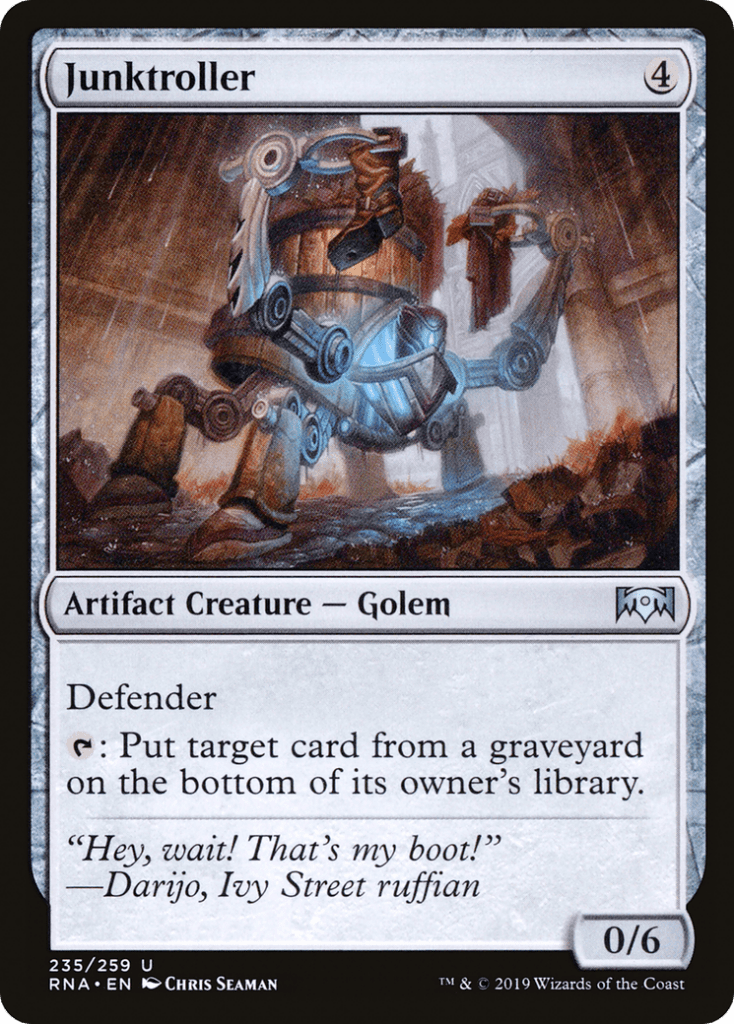
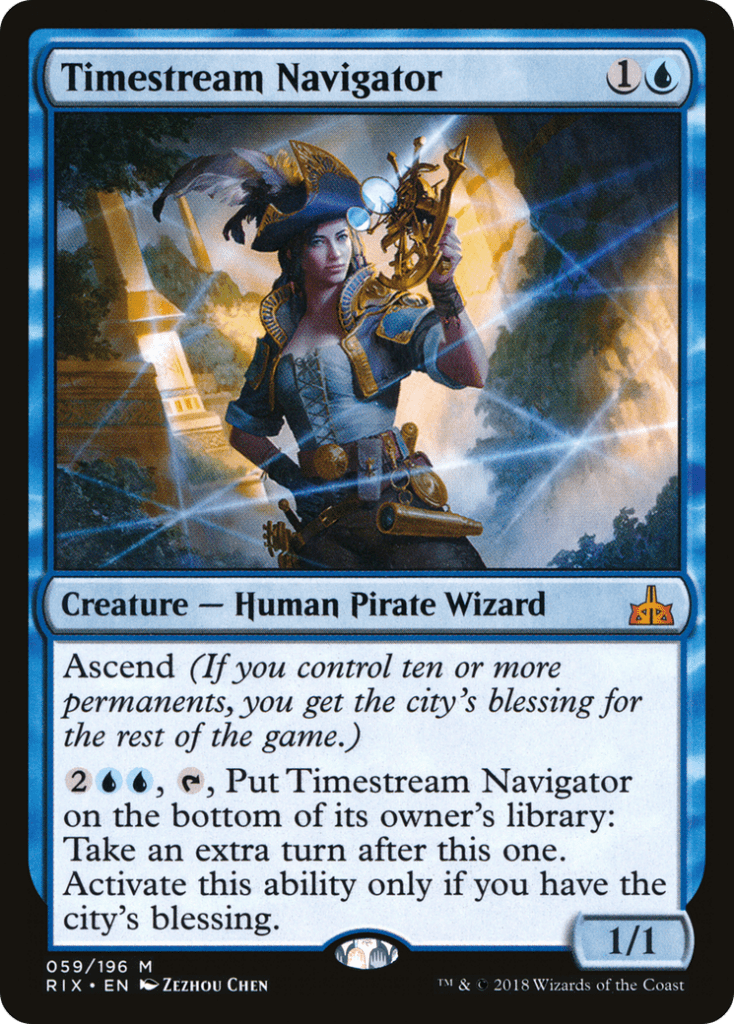
Cards like Junktroller work incredibly well with River Song, as now you’re drawing the card you put on bottom right away. Timestream Navigator is a really cool way to take infinite turns in River Song if you have something like Lightning Greaves to give her haste.
Also, scrying is obviously a little weird with River since the top of your deck is still the top. So while you can do some tricky stuff, make sure you have some way to clear the top of your deck if need be.
However if you have a card that references the top card of your deck, you can float a singular card there for a very long time. Counterbalance is the first that jumps out to me, as now you can leave the top card of the deck on any one number for a very long time.
Note that Sensei’s Divining top won’t be very good with this combo as you will need a way to change the top card if you get stuck, and drawing a card with the top then strands it there for the rest of the game. Just something to keep in mind if you decide to build the deck.
End Step
That’s going to do it for this article. I know this isn’t my typical article, but I hope you all enjoyed my gushing over Doctor Who nonetheless. The Doctor Who precons just have an insane amount of Legends and new commanders that are both incredibly flavorful, but also incredibly fun! Be sure to check out which cards we think are the best in our full set review.

Mason Clark is a grinder in every corner of the game who has played at the pro level and on the SCG Tour with Team Nova. Whether he’s competing in Standard, Historic or Modern, Mason plays with one goal in mind: to be a better player than he was the day before. Check out his podcast, Constructed Criticism, and catch his streams on Twitch.

